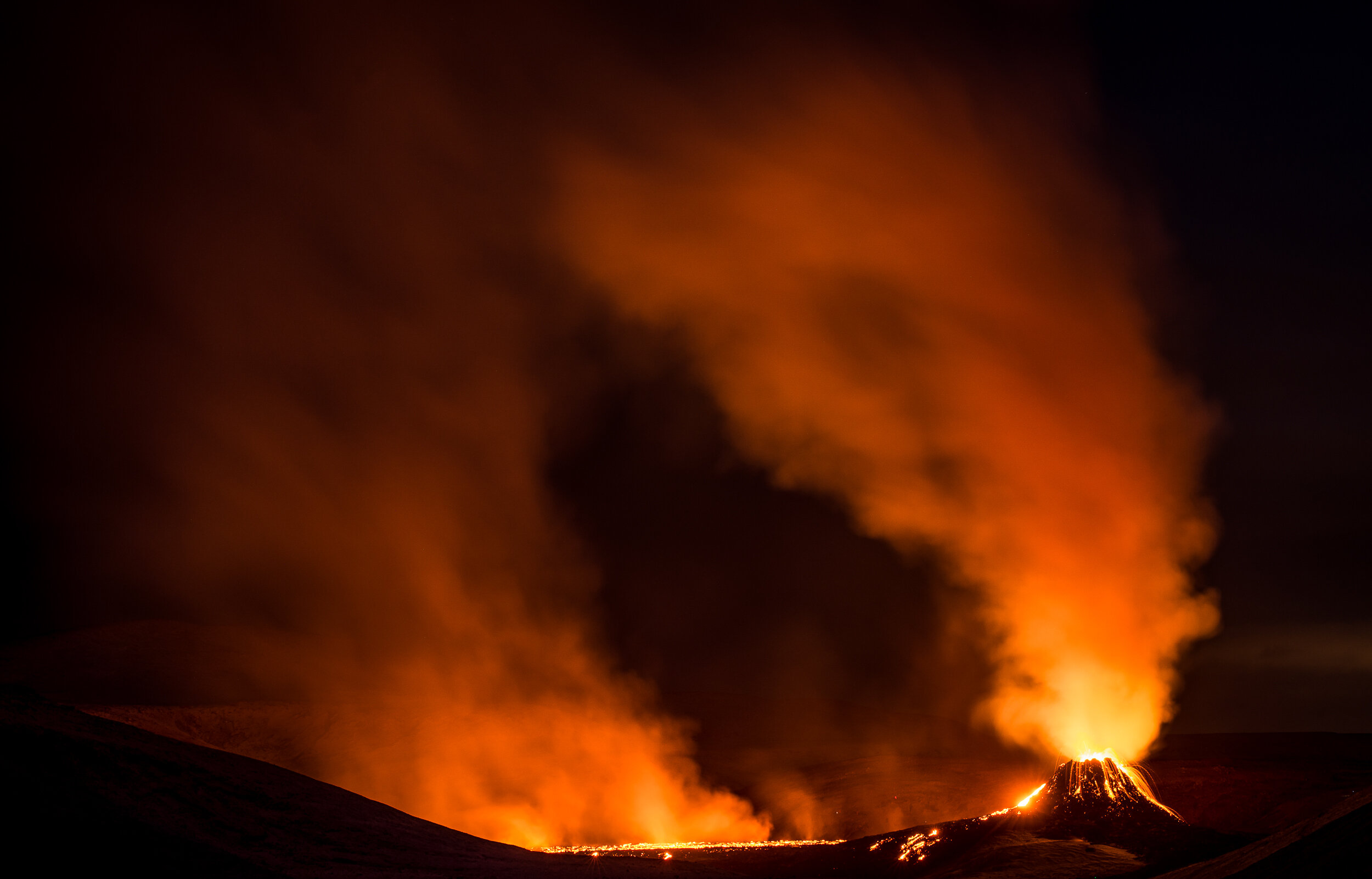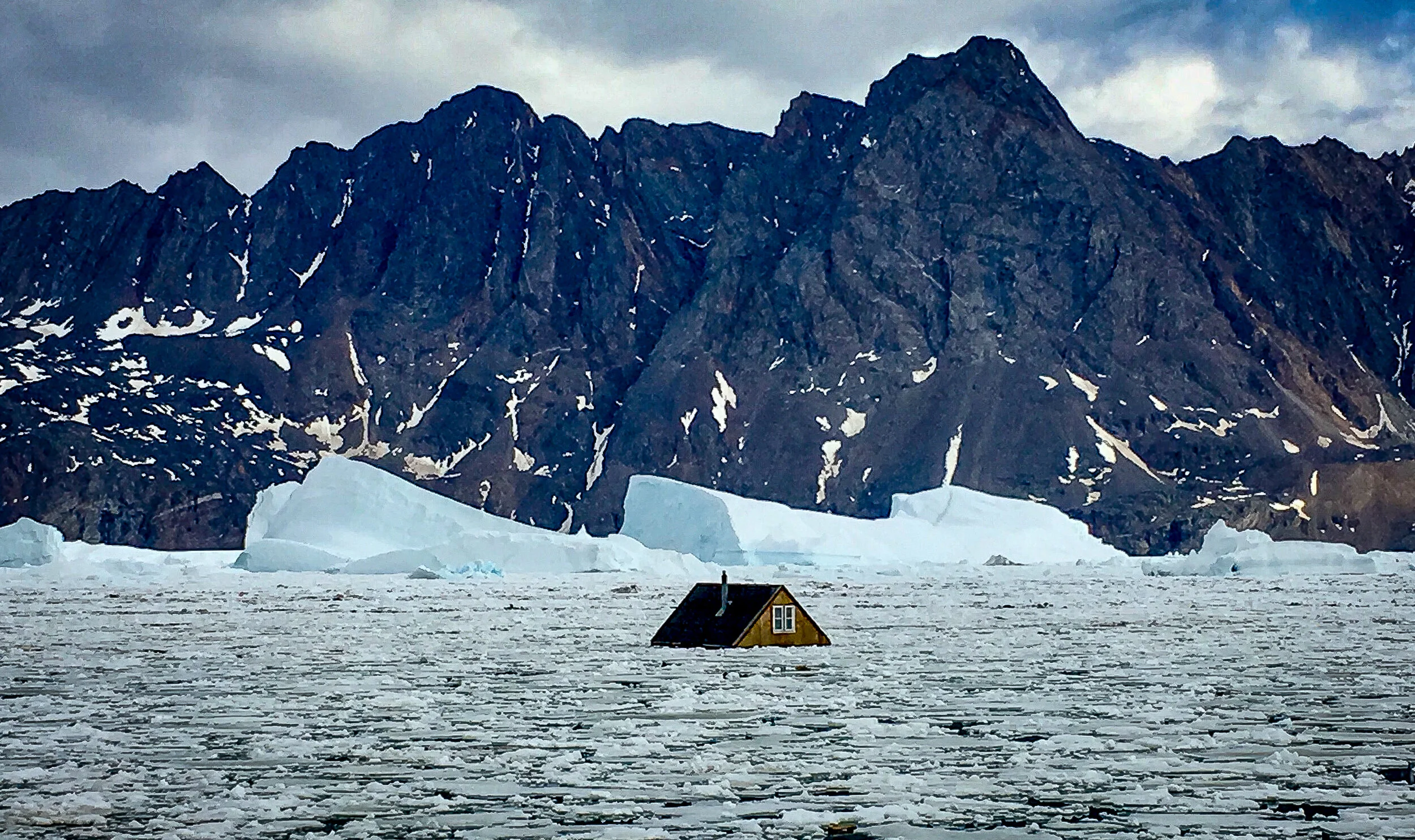Volcanic Forces of Iceland At Their Finest
ARCTIC TRAVEL / COMMUNITY
Writer: Vilborg Einarsdottir
Photographs: Hans Vera, Karl Magnus
Video: Skapti Magnus Birgisson, Hilmir Berg Ragnarsson, Einar Ólafur Eyland / Tjarnargatan
Music: Hilmir Berg Ragnarsson
March 2021
Following three weeks of earthquakes in the thousands - many ranging between 3.0 - 5.7 on the Richter scale - and months of seismic unrest on the Reykjanes peninsula; the earth finally opened.
A volcanic eruption began in Geldingadalir on the evening of March 19th and soon after Icelanders had reasons to be relieved.
Geldingadalir is close to Reykjavik, Keflavik International airport, the fishing town of Grindavik and landmarks like the Blue lagoon. Yet because of the eruption’s location and its size (we call it a tourist eruption), it has endangered neither people nor infrastructure.
Instead, Icelanders have embraced this opportunity to witness up close the forceful wonders of the volcanic nature that created the country.
Geologically unique
Iceland is a geologically unique young land. The volcanic forces now activated at Geldingadalir, although small in comparison to large, known eruptions of the past, are a reminder of the volcanic basis for its existence. Situated on the boundaries of the Eurasian Plate and the North American plate, the country also lies above a so-called hotspot, the Icelandic plume, believed to have caused the formation of Iceland itself, first appearing over the ocean surface about 16 to 18 million years ago.
Flaming works of art
Coming close to flowing lava brings one to a visual feast. Where the forces of nature create and destroy artistic masterpieces within fractions of seconds. It is mesmerizing to watch and at the same time dangerous, for pieces of flaming Magna are hurled in all directions.
JONAA©Karl Magnus
JONAA©Karl Magnus
Straight into the crater
The video below, filmed by three cinematographers from Tjarnargatan, Iceland, offers an up-close and personal view of, and straight into the erupting crater. The three, Skapti Magnus Birgisson, Einar Ólafur Eyland and Hilmir Berg Ragnarsson hiked to Geldingadalir on March 21st, each with 30+ kg of filming gear on his back and returned with the stunning footage shown here.
JONAA©Hans Vera
A visual feast for thousands
Once it was clear that the eruption threatened neither people nor constructions and was close enough to the Reykjavik metropolitan area to be seen on a clear night - Icelanders welcomed the opportunity to see these mighty forces with their own eyes. Tens of thousands have put on their hiking shoes and trekked the three or so kilometres needed to get to the eruption site from the south coast road.
Another well known Icelandic force - the National volunteer rescue teams, have made sure with massive operations alongside the local police, to keep people safe and assist those needing help on site.
JONAA©Hans Vera
JONAA©Karl Magnus
One more reason to visit Iceland
Geologists have determined that the volcanic eruption in Geldingadalir is a fissure eruption, with a direct flow from the mantle. The lava erupting there appears to be coming from a depth of 15 to 17 kilometres, which is considered unusually deep.
Early predictions were for a short eruption of one or two weeks, but it now appears this could be a much longer eruption. There are examples of fissure eruptions like this, going on for years.
Geldingadalir is a shallow valley into which the lave is now slowly filling up. A recent forecast from Iceland’s Met Office, based on an eruption rate of five to six cubic metres per second, predicts the lava field to expand and to flow over into the next valley over Easter.
So, here is yet another reason for those planning post-Covid travels to the High North to visit Iceland once it is safe. Even If there will not be no eruption to see, there will be some of the world’s youngest lava to view - in either case, it will be spectacular. ▢
Once-in-a-lifetime moments and memories being made. JONAA©Hans Vera
Vilborg Einarsdottir is the Editor-in-Chief of JONAA, the Journal of the North Atlantic & Arctic and a JONAA partner & founder. Formally a journalist for 12 years at Morgunblaðið in Iceland, she has worked since 1996 as a specialised producer of film, photography and media productions on extreme locations in Arctic Greenland and as a cultural producer in the Nordic-Arctic region. She is an awarded film and documentary scriptwriter and editor of photography books from the Arctic.




























